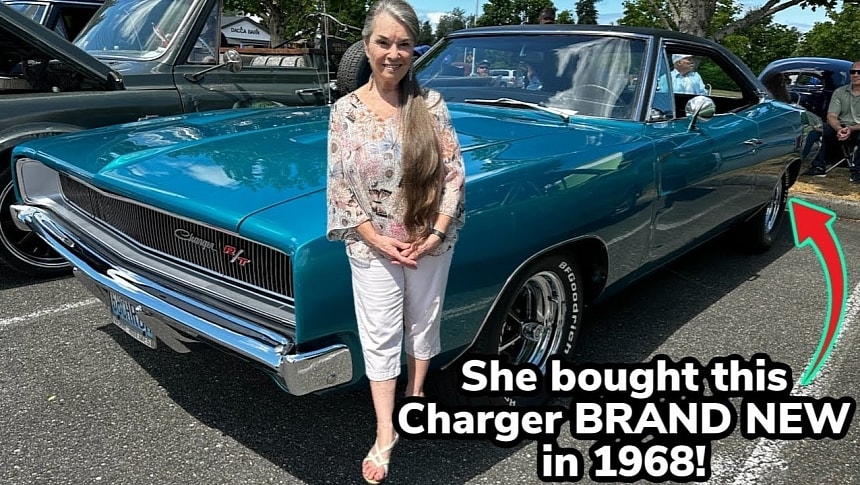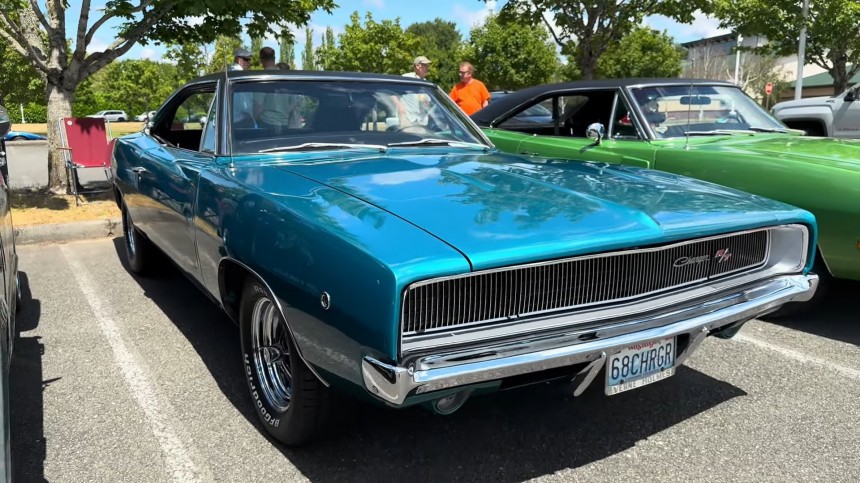When the Dodge Charger came around in 1966, it offered buyers a muscle car that still retained its luxury traits, with four individual bucket seats and plenty of leg, hip, shoulder, and headroom for all four occupants. It also proposed a 426 Hemi V8 on top of the 361 eight-banger (a one-year-only offer). However, it didn’t break the bank, and in the first two years, some 43,000 units were sold.
The second generation, however, shattered all expectations and even forced Chrysler to open a secondary assembly line for the reworked fuselage-styled muscle. Initial predictions slated the yearly demand for the second generation of the then-new Dodge car at 35,000 units. It turned out the Mopar prophets were slightly off with their foretelling.
The 1968 production garnered 96,100 units – a neat 600 percent upward leap over the 1967 numbers. The Hamtramck plant in Michigan was overwhelmed, even at the full steam of 400 Chargers a day. In March, Chrysler added the St. Louis facility to the list mid-year, and 126 extra daily examples rolled off its assembly lines.
1968 was also the year when the Road/Track package became available on the Charger. Debuted by the Coronet a year earlier, the performance option considerably boosted sales for the ’68 muscle car. Almost 17,600 (over 18%) of the total production were ordered with the R/T upgrades, which came with beefed-up suspension parts, heavy-duty brakes (with optional 11-inch discs on the front), and, of course, a duo of heavy-hitting big-blocks.
The standard equipment for the R/T chargers was the 440-4 V8, the 7.2-liter engine that fried the rear rubbers with 375 hp and 480 lb-ft (380 PS, 651 Nm). A three-speed automatic was the regular transmission, while the four-speed manual was an extra-cost option. So was the 426 Hemi and its 425-hp, 490-lb-ft of absolute piston terror (431 PS, 664 Nm), but the high price (over $600) of the engine was a heavy deterrent for buyers.
Only 468 examples came with the four-letter magic spell; the rest—around 17,100—had the 440 four-barrel V8. Sadly, accurate records of how many are left are non-existent, but once upon a Fratzog emblem, one pops up at a car meet to make car nuts go head over heels for it. Here’s one in the video below, courtesy of the DezzysSpeedShop YouTube channel.
The great part about this car is the one-owner history: this car was bought new in 1968 by the lady telling the story in 2024, and she kept it until today. She even street-raced it a little (‘I never challenged anyone, but when someone challenged me…’), but her son is now taking care of the car (in all senses of the phrase).
He had the muscle car modified with sturdier suspension parts (the second video is a more in-depth look at that aspect), and the engine and transmission were rebuilt in 2022. The paint has been refreshed in 1992, but it looks impeccable. The odometer next to the tic-toc-tach reads 52,000 miles (83,685 km), but its upgrades make the car a much better driver than the original setup. To quote the owner, ‘I kinda wish the bucket seats were wrap-around bucket seats because sometimes it is hard to stay in the seat.’
The 1968 production garnered 96,100 units – a neat 600 percent upward leap over the 1967 numbers. The Hamtramck plant in Michigan was overwhelmed, even at the full steam of 400 Chargers a day. In March, Chrysler added the St. Louis facility to the list mid-year, and 126 extra daily examples rolled off its assembly lines.
1968 was also the year when the Road/Track package became available on the Charger. Debuted by the Coronet a year earlier, the performance option considerably boosted sales for the ’68 muscle car. Almost 17,600 (over 18%) of the total production were ordered with the R/T upgrades, which came with beefed-up suspension parts, heavy-duty brakes (with optional 11-inch discs on the front), and, of course, a duo of heavy-hitting big-blocks.
Only 468 examples came with the four-letter magic spell; the rest—around 17,100—had the 440 four-barrel V8. Sadly, accurate records of how many are left are non-existent, but once upon a Fratzog emblem, one pops up at a car meet to make car nuts go head over heels for it. Here’s one in the video below, courtesy of the DezzysSpeedShop YouTube channel.
The great part about this car is the one-owner history: this car was bought new in 1968 by the lady telling the story in 2024, and she kept it until today. She even street-raced it a little (‘I never challenged anyone, but when someone challenged me…’), but her son is now taking care of the car (in all senses of the phrase).
He had the muscle car modified with sturdier suspension parts (the second video is a more in-depth look at that aspect), and the engine and transmission were rebuilt in 2022. The paint has been refreshed in 1992, but it looks impeccable. The odometer next to the tic-toc-tach reads 52,000 miles (83,685 km), but its upgrades make the car a much better driver than the original setup. To quote the owner, ‘I kinda wish the bucket seats were wrap-around bucket seats because sometimes it is hard to stay in the seat.’







































